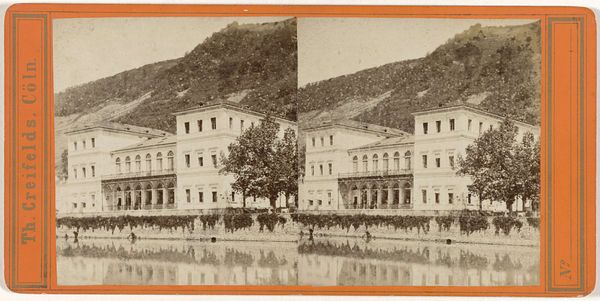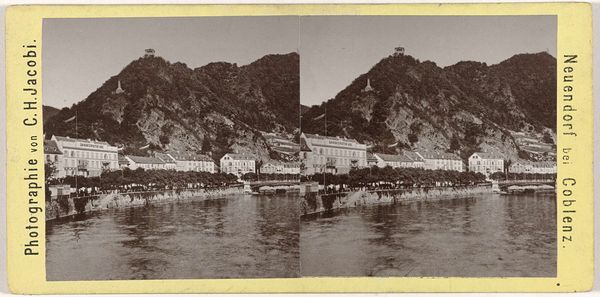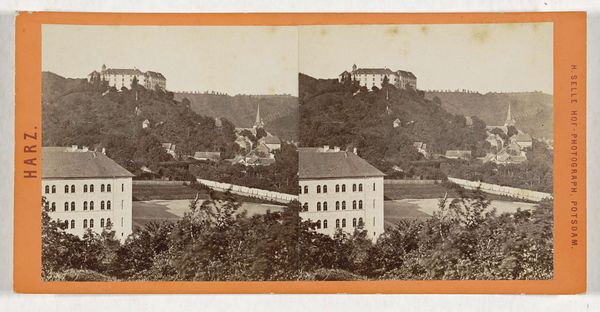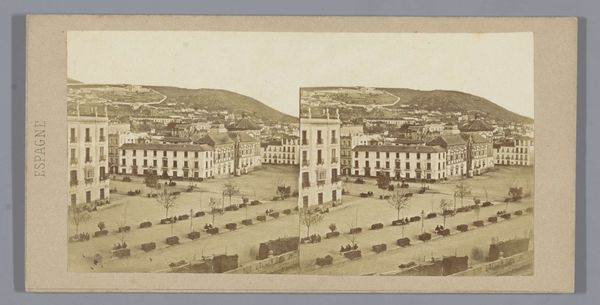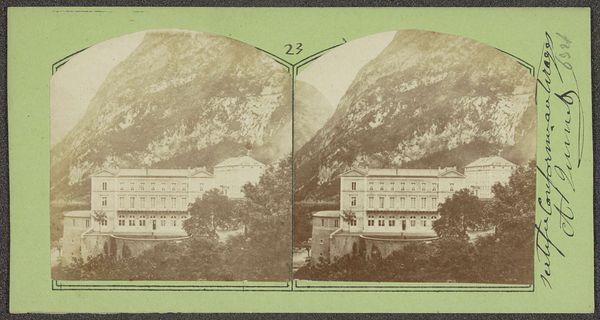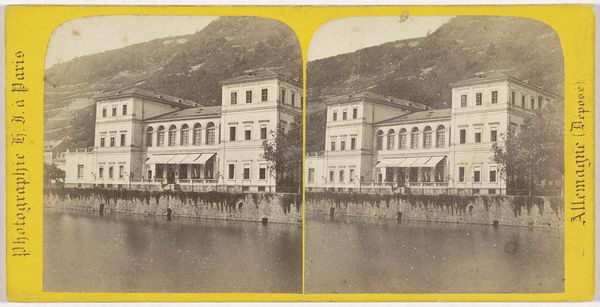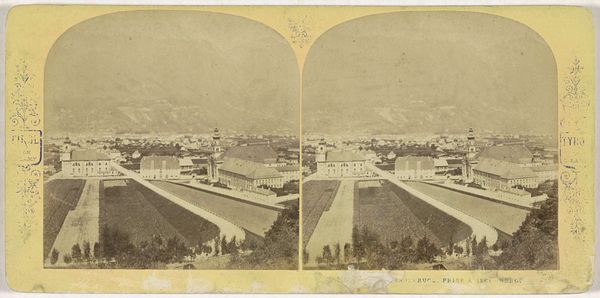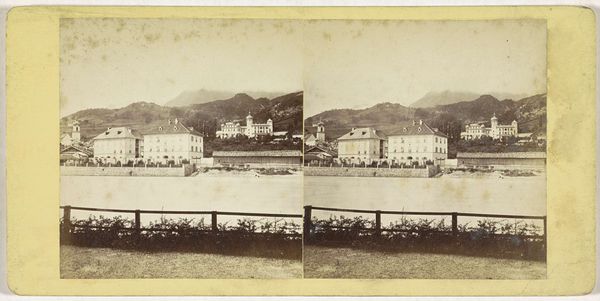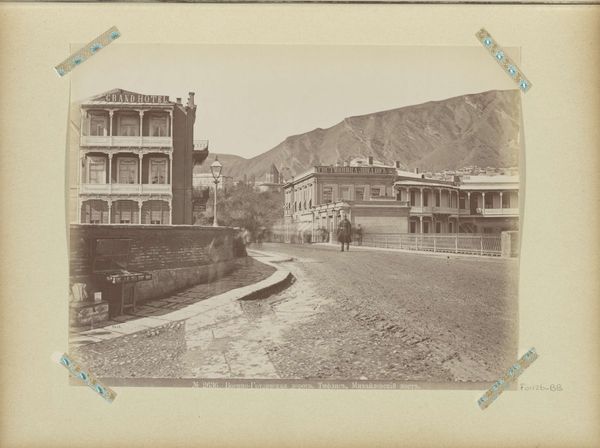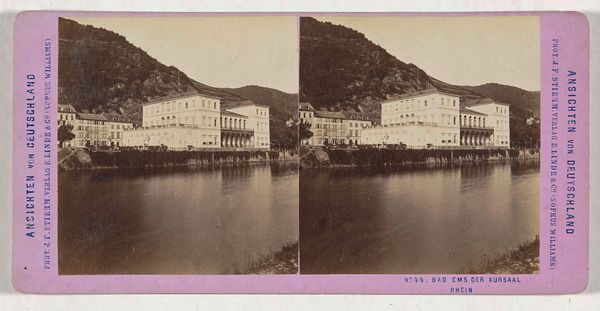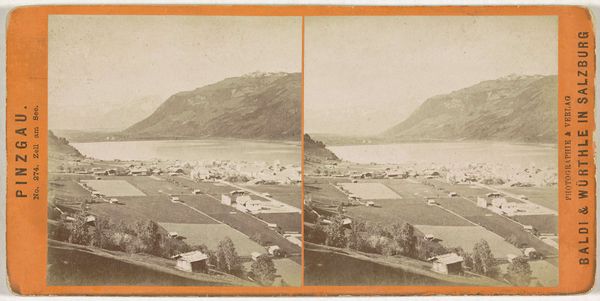
Dimensions: height 88 mm, width 178 mm
Copyright: Rijks Museum: Open Domain
Curator: This albumen print by Carl Heinrich Jacobi, titled "Kurhaus in Bad Ems, Duitsland", dates from between 1868 and 1876. The albumen process gives it a unique sepia tone. What is your first impression of the scene? Editor: Tranquil and rather still. The reflections are mirror-like, and despite the scale of the buildings, there's a serene, almost melancholic atmosphere. I notice the ordered landscaping, but it does not disrupt the nature. Curator: Jacobi seems interested in conveying both order and a sense of romantic landscape. Note how the river acts as both a compositional element but also mirrors civilization and wild nature across its plane, hinting to psychological duality. Editor: Interesting. And the placement of the Kurhaus itself is important. Its grandeur and scale show a changing urban landscape amidst untouched mountains, an element used by those profiting from the popularization of these natural resources. I see this choice as highly symbolic of the era’s burgeoning middle class, their access to leisurely spaces shaping societal landscapes. Curator: Yes! The spa town represented leisure, luxury, even escape from everyday realities in German cultural consciousness. The architecture's visual language—the precise lines against a gradient background, invites readings into our conscious understanding of human experience contrasting nature and culture. Editor: The choice of albumen printing too – that particular softness it lends to detail. It romanticizes a building built in great part due to social pressures and capitalist motivations. The lack of human presence feels like an active attempt to emphasize idealized place, further feeding this visual tradition. Curator: True! Albumen print adds a veil of nostalgia over even contemporary subjects when viewed later, creating cultural memory of this site even from when it was new. This is an effect often desired in popular romantic photography. Editor: I think it does succeed! I am drawn in by how social history can be subtly framed by technological and stylistic decisions, leaving the viewer to wander and reflect on those social dynamics across the ages. Curator: A compelling discussion showing art can offer multifaceted ways of understanding symbols. I will keep reflecting on how photography became essential for developing place identity during transformative historical periods!
Comments
No comments
Be the first to comment and join the conversation on the ultimate creative platform.
